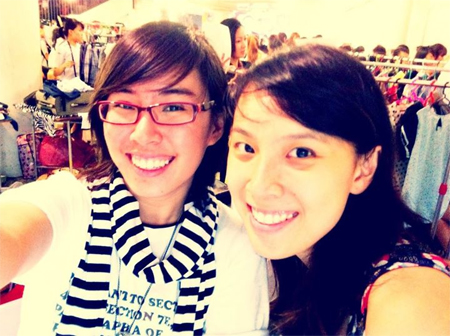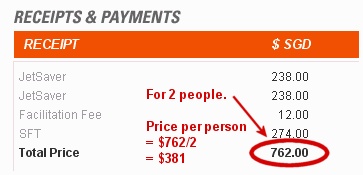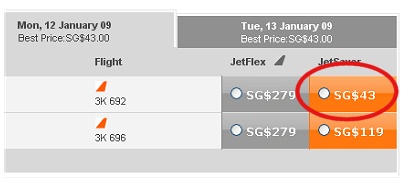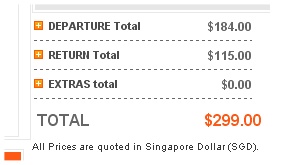
Hello, I blog!
I share all my sporadic and toilet thoughts in here, because I am random like that.
Running a successful flea market stall
I participated in today’s flea market as a seller with the best friend … to a pleasantly shocking response. We pulled in a combined amount of slightly over $350, way above what we had expected.
The day began with me being completely unoptimistic. Based on my last flea market booth-ownership experience(s), I barely made enough to cover the rental, mostly because of mistakes such as poor location, or wrong pricing. After today, I realized that running a successful booth at a flea market requires a good mix of several factors.
I guess we finally nailed it today.

Hello from our booth @ the flea.
Location and Timing
Today’s flea market was located right in the heart of town. And with it being the Halloween weekend, the crowd was twice (or even thrice) as strong. The booth rental was much more expensive than usual (I paid $55, while the market rate is usually about $35-$45), but it’s well worth it. You’re paying for a prime location, where the heart of all activity is. Crowds are almost a given since the flea market is so easily discoverable (and accessible).
The previous flea market I took part in had a much cheaper rent, but the location was so out of the way that it required a shuttle bus (with an extremely irregular frequency) to take people there. Rent was so much cheaper, but I barely covered it.
We should bring the flea market to the people. Not bring the people to the flea market. Because if it’s the latter case, no one would bother. There’s so many other good (central and accessible) places to shop in Singapore anyway. Something’s seriously wrong.
Be Selective Of What You Sell (To Minimize Distractions)
Most people set up booths with the mentality that they should try to sell every single item they want to get rid of – regardless of condition.
But what you sell plays a very big part in defining the impression others have of your booth. If it’s overrun with old, faded and graying stuff (which I saw plenty of), it’s going to be a big fat turn-off.
No, people are not going to buy them. Not even if you price it at $3.
When people are put off by all the graying stuff in your so-called “bargain bin”, they won’t stop to look at the rest of your (slightly more decent) stuff. They would probably be more drawn to the booth next to you hawking clothes that look much newer.
Select your items with loads of discretion. This time round, we were much pickier about what we wanted to sell. We met four days prior to the flea market to go through our items carefully, picking out those that are old, grey, slightly torn or those with furring, packing them and sending them off to the Salvation Army.
While what’s left behind looked beyond decent.
The less clutter your have in your stall, the more people will stop at look at the things that actually matter. In flea markets, you’re not competing based on prices. You’re competing for attention at the most basic level.
By narrowing your items down to the most decent, resalable ones, it already means that your potential buyers will be less distracted by the sight of that old graying shirt sitting in your bargain bin, or that old dress which you’re so emotionally attached to (when it’s basically junk in other people’s eyes).
Pricing
A very, very tricky aspect here. Even with the right stuff, pricing them too high will still put them off. While pricing them too low … well, buyers will be much happier. But will you be?
When pricing items, put yourself in the shoes of shopper at a flea market. (By even participating in a flea market as a seller, I would assume you would have at least shopped at a flea market before!) The word ‘flea market’ already puts people in the ‘bargain hunting’ frame of mind. With flea markets (usually) being held at open-aired warehouse-like environments, it further affirms potential buyers’ expectations of prices to be much lower.
If there’s the occasional exclusive item (eg. a brand new branded handbag) you’re not willing to sell at typical flea market prices, don’t even take it along. (We should aim to reduce distractions, remember?)
If your prices are set too high, there’s a huge mismatch between your prices and the buyers’ price expectations, and they will simply get miffed and move on. When the discrepancy in price expectations are huge, they won’t even bother to bargain. (They’d already be thinking they won’t have a chance of getting the price down to what they’d expect.)
The smaller the discrepancy in price expectations, the higher the chances of them stopping to at least negotiate with you. (Aha! Any communication opportunity with a buyer is a good opportunity, because you are at least given a chance to turn things in your favour!)
Needless to day, there’ll always be the odd joker who will ask for exorbitant price reductions.
There’s no hard and fast rule to pricing for sure, and a lot of it relies on instincts. And your instincts will definitely warn you when someone’s going to far with the bargaining, and that is when you let the person down gently. (Unless, you’re real desperate to clear what you’re selling.)
Keep Your Stall Layout Simple
You don’t need bright, flashy signage to catch people’s attention to your booth. All you have to do is to keep it simple.
Remember what I talked about earlier about minimizing distractions? Well, you’ve already narrowed your items down to the best ones (which you know you’d be interested to look at if you are in your buyer’s shoes). That’s a good starting point, because people will actually be drawn to your booth by the (comparatively better) stuff you sell.
Next, it’s giving people the information they want upfront.
Individually tagging items with odd-numbered prices is tedious and does not guarantee results. (Not to mention the unnecessary logistics required to calculate and distribute odd-numbered amounts at the end of the day, especially if you’re sharing a booth with a friend.)
Instead, big, clearly written signs with the prices should be displayed. It also helps if you group your items based on price – such as $5 items, $10 items and $15 items – so your potential buyers can simply zoom into the price range they are looking out for.
More importantly, keep your items accessible.
Your potential buyers should be able to browse your items with ease. This means not hiding your rack at some secluded corner thinking your buyers would “simply walk in and look at your stuff”, because they won’t.
This also means not overloading your rack with clothing to the point where browsing actually requires some physical exertion. (Ever experienced a time where you’re browsing through an extremely tightly-packed rack of clothing at a sale? Not very pleasant, ain’t it?)
——————–
Well, hope these take-aways helped, especially if you want a flea market stall of your own someday.
Oh, and one more thing.
Remember that you would always meet idiots. Every flea market will have its fair share of cheapskates (there’s a huge difference between a ‘bargain hunter’ and an ‘outright cheapskate’) who would request for ridiculous discounts, and you should definitely expect to meet people like that.
It’s up to you whether you want to relent. But let me share my story.
I mistakenly gave too large a discount to this Filipino buyer right at the beginning. (I sold her four items with an original combined price of $45, at $32.) Subsequently, she kept returning to my booth to request more and more discounts which irked me like crazy. Certainly, you wouldn’t want to be giving huge discounts for the entire day, do you? You’re going to start an unwanted trend.
Eventually, I drove her away by naming a ridiculously exorbitant price to a jacket she requested for. She shot me a disgusted look and went away, never to be seen again.
It gave me more time to deal with more pleasant, accommodating customers. Oh, the bliss.
Your call. (;
The woes of budget airline travel
Never did realize that making bookings for budget airline travel can be like … dabbling in the stock market.
The prices fluctuate like woah.
Recently, I witnessed first hand how a friend was practically on the edge of his seat as he constantly made calls to the airline’s hotline – and reporting how the airfare for the same particular flight was leaping by tens every twenty minutes or so.
He made a booking for a flight to Kuala Lumpur in the afternoon at the cost of only … about $40-50 SGD.
This evening, he proceeded to check the price again (supposedly to add me into the original booking) and discovered that the price was now a whooping $137 SGD.
He called later again and the price was in the $140s.
Grace and I were pretty worried that the same thing could happen to us because we were intending to book flights for our trip to Hong Kong next month, from the same airline.
I recall checking the prices for our flight sometime last weekend – and it was standing at $359 SGD.
This evening, we looked up the price again, and were delighted to find that the total price had fallen to $299 SGD all inclusive. (With our return flight only costing $43 SGD (excluding surcharges and taxes).
But we held back the booking for a while – because we still had some final arrangements to make.
Four hours ago, I logged into the airline’s website to double-check the prices … and did a double take because the price for our original return flight had more than doubled … from $43 SGD to $200+ SGD – excluding surcharges and taxes. That’s practically costing an arm and a leg in comparison to the prices we saw earlier.
That was when I texted Grace in panic – and we decided to book right then on the spot, lest the prices surged further.
The later return flight (an alternative to our original intended flight) was comparatively cheaper ($119 SGD excluding surcharges and taxes), leading to a total cost of $375 SGD all inclusive per person.
That was the price we were supposed to get while I made my booking.
Or so I thought.
After filling in all our personal details and credit card information, I clicked on ‘confirm’. That was when I looked at receipt, and did a double take.
W.T.F?!
Why was I charged $762 for two people?!
Did a re-check on the price. Apparently, the price per person had been bumped up by a further $6 SGD while I was busily filling in the reservation form.

Sidenote: The additional $12 ($6 per person x 2) is not due to the facilitation fee as seen in the screenshot above. Everything was inclusive in the quotation I received earlier.
Blame my slow typing skills or whatsoever. (Although I generally type pretty fast, albeit not fast enough to beat this c*cked up system.)
Ah well, too bad.
Air tickets have already been paid for. No point harping on it, aye? Just sit back and bask in the happiness that our trip to Hong Kong has now already been booked.
Four hours later (20 minutes ago) …
I decided to re-access the airline booking system to check out the prices again. (My main motive was to hope that the prices would have risen further so that I can laugh at how I had managed to secure our air tickets before the further price escalations.)
I was in for a shock.
Apparently, the prices for our original intended return flight had dropped all over again … from the earlier $200 odd SGD back to $43 SGD!

Can someone just say, ARGHHHHHH?!
I don’t know why this is happening – but my guess is that the airline presumed no nutcase out there will be making flight bookings at 4 A.M. and thus reduced the price to match the lower demand. (For the record, I made my booking at midnight.)
Counting all the possible surcharges and taxes, the total flight cost per person would have been …

-BIGFATSIGH-
Heartache. We practically overpaid by $80 SGD.
And Grace dear – I don’t know whether you’d be laughing or fuming at this point in time. But … I think we’ve just been successfully manipulated (and screwed over) by Jetstar’s online booking system.